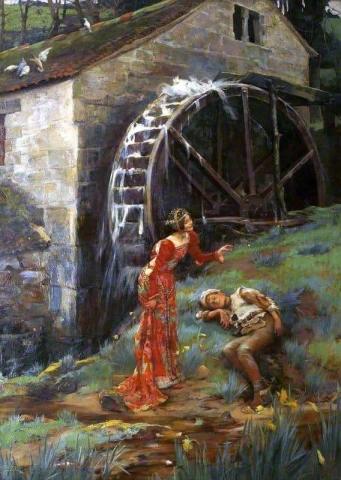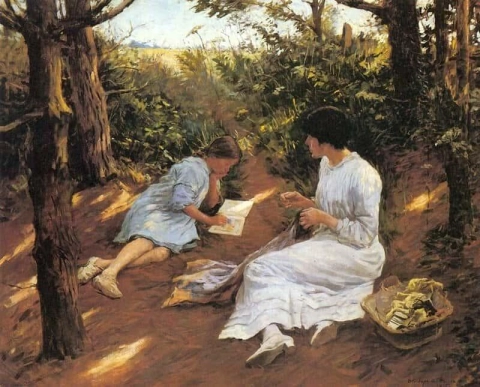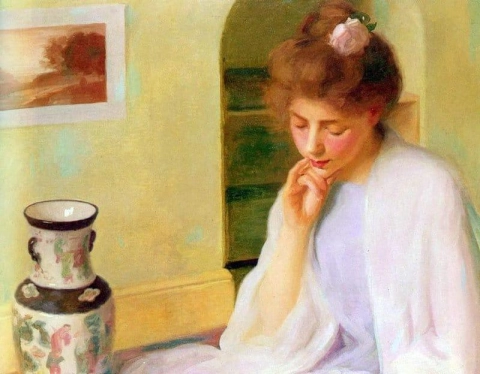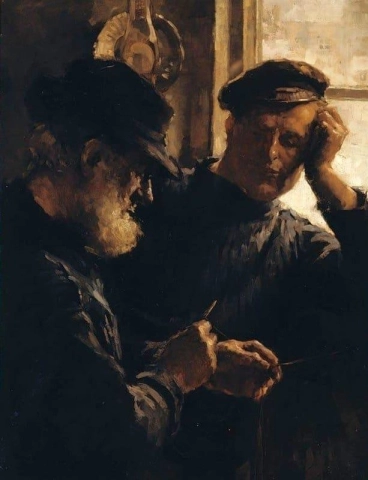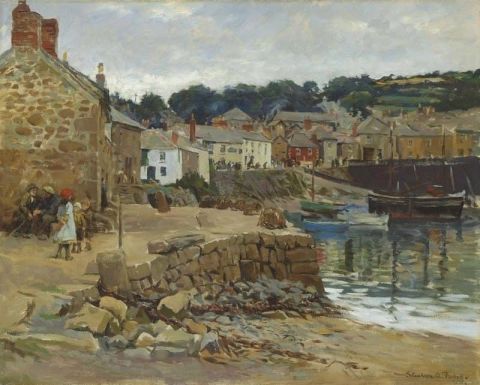

Hand painted reproductions of Elizabeth Adela Forbes
Elizabeth Adela Forbes (1859–1912): A Pioneer of Feminine Impressionism
Elizabeth Adela Forbes (1859–1912) was an English painter known for her association with the Impressionist movement and her depiction of domestic and landscape scenes. As one of the few prominent women artists of her time, Forbes made a significant contribution to the British art world, often drawing inspiration from the French Impressionists. Her works exemplify the vibrant use of color and light, capturing the natural world with a soft, yet detailed, approach.
Early Life and Education
Born on November 28, 1859, in London, England, Elizabeth Adela Forbes came from a supportive, artistic background. Her early years were marked by a deep interest in art and painting, which led her to pursue formal studies. Initially trained in the Royal Academy in London, she also took classes from prominent English artists. Her formative years were spent learning the skills of academic painting, but her exposure to the Impressionist movement during trips to Paris was pivotal in shaping her artistic voice.
In Paris, she studied at the Académie Julian, a well-known school where many artists, particularly women, sought training outside the traditional Academy. There, she developed an interest in plein air painting (painting outdoors) and began experimenting with brighter colors and looser brushwork, moving away from the Victorian academic style to embrace a more spontaneous, vibrant approach to capturing light and nature.
Artistic Development and Style
Elizabeth Adela Forbes' style was influenced by the French Impressionists, but she also adapted these techniques to express her own sensitivity toward the natural world. She was especially interested in the effects of light on the landscape and domestic life, which is evident in her use of color and brushwork. Her works often focused on domestic scenes, landscapes, and figures, frequently portraying the everyday lives of women and children in natural settings.
Forbes’ painting technique incorporated quick brushstrokes, a hallmark of Impressionism, which allowed her to capture fleeting moments of light and atmosphere. She also exhibited a strong sense of movement in her works, creating scenes filled with vitality. Her portraits and genre scenes often reflected a sense of intimacy, showcasing the lives of women, many of them engaged in household chores or leisure activities.
Her work also emphasized natural beauty, often featuring figures in lush garden settings, or observing the interplay between light and shadows in domestic spaces. Forbes’ ability to combine realism with the spontaneity of Impressionism created a distinctive body of work that set her apart from many of her contemporaries.
Themes and Significance
Forbes' art frequently focused on feminine subjects—whether that was in her domestic scenes, portraits, or depictions of children. Her works are often imbued with a sense of feminine energy, capturing women in everyday life and celebrating their roles in both the private and public spheres. Nature was another recurrent theme in Forbes' work, and her approach to landscape painting was informed by the Impressionist interest in natural light and color.
Her works are also significant for their realism, as Forbes painted with a keen eye for the details of everyday life. Her depictions of women, particularly the domestic sphere, are striking in their honesty and grace, breaking away from more idealized portrayals of women during her time. She was also one of the few women artists who gained recognition in a male-dominated art world, making her an important figure in the history of women in art.
Achievements and Recognition
Elizabeth Adela Forbes exhibited her works at various prestigious exhibitions, including those at the Royal Academy and the Society of British Artists. She was well-regarded for her innovative use of color and light, and many of her works were lauded for their freshness and clarity. Forbes also became a member of the New English Art Club, an organization that embraced Impressionist principles and became the center of avant-garde art in London.
Forbes gained recognition for her distinctive treatment of subjects such as women in domestic spaces and children at play, often evoking a sense of calm, beauty, and the natural rhythms of life. She was one of the leading female figures in British art at the time, known for her sensitivity to the roles of women in society and the daily life of families.
Her painting, “The Dance of the Nymphs,” exhibited in 1895, was a significant piece in her career, showcasing her focus on movement and the fluidity of light. It brought her critical acclaim and helped solidify her place within the Impressionist movement.
Legacy
While Elizabeth Adela Forbes was not as widely celebrated as some of her male contemporaries, her works left a lasting impact on British Impressionism. She provided a unique feminine perspective in the male-dominated world of art, particularly with her intimate depictions of domesticity and her exploration of the roles of women in society.
Her works are found in several prestigious collections, including the Tate Britain and the Victoria and Albert Museum. Today, Forbes is recognized as a pioneering female artist who was instrumental in introducing Impressionist techniques to British art.
Where to Find Reproductions of Elizabeth Adela Forbes’ Art
For those interested in bringing the light-filled, vibrant world of Elizabeth Adela Forbes into their homes, high-quality reproductions of her work are available from galleries and online platforms dedicated to Impressionist art. Whether you’re drawn to her domestic scenes, landscapes, or portraits, her works continue to inspire and resonate with those who appreciate her depiction of the natural world and the feminine experience.
Imagine owning an original-style painting by one of the greatest artists in history. At POD, we offer you the chance to make this dream a reality. Each canvas is faithfully reproduced down to the smallest detail, allowing you to experience the beauty of the artist’s vision in your own home.
Our reproductions are crafted by experienced painters using the finest materials and time-honored methods. We are committed to delivering works of exceptional quality that will inspire and bring joy to your family for generations to come.


